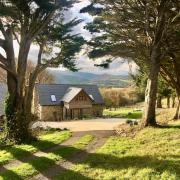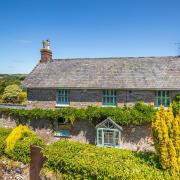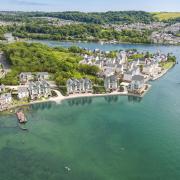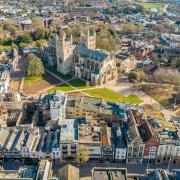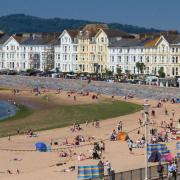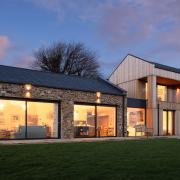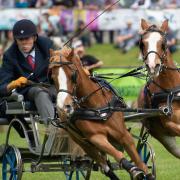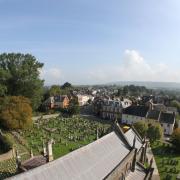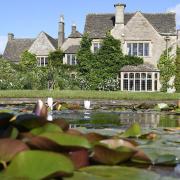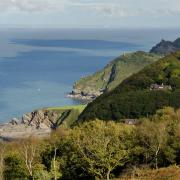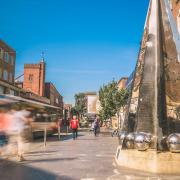Cobbled streets, flower-strewn cottages and resident donkeys have seen the village named the most Instagrammable village in the UK

Clovelly’s harbourmaster Stephen Perham has seen it many times. “People arrive here, walk down the street as quick as they can, have something to eat and disappear again,” he says. “But you’ve got to take your time in Clovelly; you’ve got to fully absorb it to appreciate it. When you’re sitting on the harbour wall, just think, that was built in the 1300s. Walk through the side streets, look in the museum, explore the woods, the Victorian gardens. Enjoy your time here.”
This North Devon village perched 400ft high on a clifftop has been attracting visitors from all over the world for centuries.
Clovelly is privately owned, so you have to pay an entry fee, making it one of the most unique places in the country.
People love its unspoilt feel and come to admire the quaint, whitewashed cottages with flowering hanging baskets, which tumble ‘like a waterfall’ down to the port.

And then there are some of the most breath-taking views over Bideford Bay and across the coastline, towards the North Atlantic Ocean. It’s easy to see why Clovelly makes it into so many social media feeds.
But this village was built around the herring fishing industry and still has a deep connection to the sea and its ‘silver darlings’, as the herring are known.
Each November, the village comes out to celebrate its world-famous heritage at the annual Herring Festival, which features cookery demonstrations, exhibitions, live music and plenty of food and drink.
Stephen plays a key role in this important event in the village calendar. His family has been part of the fabric of life here for more than 200 years and he is known as the last of the Clovelly herring men.

He says it’s important for visitors to appreciate the heritage, as well as the beauty of his home.
“I’ve always worked around the boats,” says Stephen, harbourmaster for 17 years, the job his father and cousin had before him. “I’m like one of the black and white photographs you see of a place,” he adds. “Two hundred years is a long connection to have somewhere. To be able to keep that tradition going, that feeling that you are part of history is very important to me.”
Clovelly - originally owned by William the Conqueror, King of England, and gifted to his wife – grew from its quay. A rudimentary structure was built in the 14th Century to allow a small fleet of fishing boats to catch herring and mackerel in Bideford bay.
When the Cary family took over the running of the village in the 17th Century, a more substantial quay was constructed from stone, making it the only safe harbour between Boscastle in Cornwall and Appledore, higher up the North Devon coast. The small harbour once sheltered up to a hundred fishing boats and up to 9,000 herring could be landed here at any one time. Donkeys were used to transport baskets of herring up and down the steep, cobbled high street.

Today, the industry has dwindled and the donkeys now relax in the top field (sledges do the hard yards now). But Clovelly remains a working fishing village with a tight-knit community, fiercely proud of its roots.
Local tour guide Brad Brunsdon helps to make sure visitors appreciate this and enjoy the full Clovelly experience. He takes people through the lesser-known side streets and down to the quay to watch the fishermen unload their catch, explaining how the village used to work and how life carries on today.
“A lot of people say they would have missed these parts if they had gone around on their own,” says Brad, who moved here 18 months ago and is still finding new areas to explore. “There’s no job like it,” he adds. “I’m taking people around one of the most beautiful places in the country. Seeing their expressions as they go around each corner is fantastic. People often ask me where the best place to take a photo is, but there are just so many. It’s hard to say...”
FIVE THINGS YOU SHOULD KNOW ABOUT CLOVELLY:
Right royal present: The estate was originally owned by William the Conqueror, King of England, gifted to his wife and then had many royal associations until 1242 when first acquired by the Giffard family. Just three families have owned Clovelly village and estate through the ages. The Honourable John Rous is the current owner
Artistic inspiration: Victorian writer Charles Kingsley lived in Clovelly and Charles Dickens wrote about the area. William Turner painted the village and Rex Whistler featured it in much of his work.
Trusty donkeys: The fishing village is famous for its donkeys. They carried the heavy baskets of herring up the narrow, cobbled streets. Later, they used to transport tourists’ luggage to and from the hotels. Today, they enjoy a much more restful existence, posing for photographs in the street.
Going sledging: Villagers, postmen and suppliers transport their loads up and down the street on sledges because the village is too steep for vehicles.
Up and down after a pint: The New Inn stands at the point where the cobbled village street changes from “Up-a-long” to “Down-a-long”.
COMING UP IN AND AROUND CLOVELLY:
Events are subject to change due to the ongoing COVID-19 pandemic.
29th March - 18th April: During the Easter holiday's Skern Lodge is providing fun adventure days for the whole family. The sessions can include climbing, surfing, kayaking, high ropes, rafting, archery, assault course, canoeing, surf skiing and orienteering. See skernlodge.co.uk
10th July: The Clovelly Maritime Festival is a fabulous celebration of all things we love about the seaside. Expect Punch and Judy shows, face painting, yacht races and live music all in aid of Bideford & District Sea Cadets.
5th September: The Lobster and Crab Feast is Cloverlly's annual celebration of its famous sustainably caught seafood. This event is an epicurean's dream with attractions including cooking demonstrations, folk music, beer tasting, craft stalls and most importantly lobster and crab dishes to please every kind of foodie.
27th October: Apple Day is a favourite on the Clovelly calendar. Expect lots of fruity fun, including apple pressing, crafts and cookery demonstrations.
21st November: The Herring Festival is the main event when the “silver darlings” start to come along the North Devon coast. On the quay, kitchens serve a variety of herring specialities, along with beer, gin and cider tastings, local food and craft stalls. Throughout the day there will be live music, street entertainers, face-painting, an art workshop, an exhibition of Clovelly herring fishing, tasters, recipes, and children’s activities.
WHERE TO EAT, DRINK AND VISIT:
Some locations will be closed to the public and eateries may only be open for takeaway or delivery due to the ongoing COVID-19 Pandemic.
In Clovelly: Home cooking in the Up-along Bar at the New Inn (apparently, the very best homemade scones are Bea’s) or the Harbour Restaurant at the Red Lion.
Visit Clovelly Court Gardens at the top of the village. There are splendid herbaceous borders and magnificently restored Victorian glasshouses. It lies just next to the C13th parish church of All Saints.
There are some amazing walks along the cliffs, the beaches and through the village. The waterfall past the lifeboat station is said to have links to Merlin the wizard. The hidden cave behind is supposedly his home…
Take a stroll along the Hobby Drive. The drive, created by returning soldiers from the Napoleonic wars, winds through the woods.
You can extend your visit by staying in one of Clovelly’s two hotels: the 400-year-old New Inn, in the heart of the village and the 18th Century Red Lion on the quay.
There are also boat trips, tours, plus more festivals and events throughout the year.
Elsewhere in North Devon: The Royal George in Appledore is beautifully done-out, with great family-friendly food and fantastic views over the Taw and Torridge estuary.
The Farmers Arms in Woolsery does amazing pub food and it has a fish and chip shop next door.
Have you joined the Devon Life Facebook page yet?




